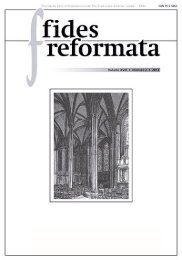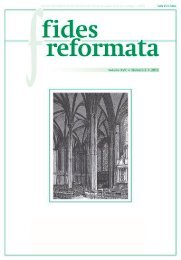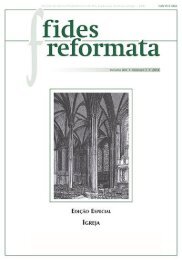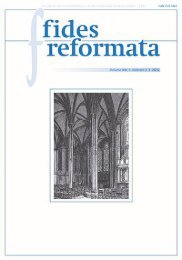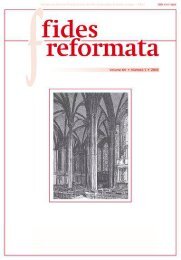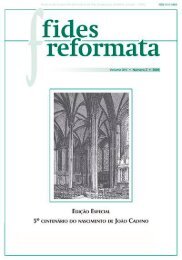You also want an ePaper? Increase the reach of your titles
YUMPU automatically turns print PDFs into web optimized ePapers that Google loves.
P.H.R. (Rob) van Houwelingen, John and the Others<br />
that his testimony is true, and finally that one of them is making a personal<br />
comment. One wonders, however, (1) how editors speaking on behalf of the<br />
Johannine community can guarantee the testimony of an eyewitness (the general<br />
view is that the comparable reference of John <strong>19</strong>:35 which has the third person<br />
singular – he knows that his testimony is true – is from the evangelist himself);<br />
and (2) where else in ancient literature <strong>do</strong>es one find a postscript from a group<br />
of editors among whom one person rounds that off with a concluding phrase?<br />
The epilogue of the Fourth Gospel requires further examination in regard<br />
to the used “we”-form, in comparison with the use of the third person singular<br />
and the first person singular. The verses 24a, 24b and 25 will be discussed<br />
separately.<br />
2.2 Identification of the writer<br />
By using the demonstrative pronoun twice, verse 24a points to the identification<br />
of the beloved disciple as the witness who has lived the longest and<br />
the writer of the book. Since the phrase “he who wrote these things” (ὁ γράψας<br />
ταῦτα) is parallel to the phrase where the purpose for writing is expressed<br />
“but these are written” (ταῦτα δὲ γέγραπται), one should relate that to the<br />
whole of the book. The authorship of the Fourth Gospel apparently cannot be<br />
attributed to the other disciple, Simon Peter, who played such an important<br />
role in chapter 21. 31 Would attributing the Fourth Gospel to the beloved disciple<br />
be fiction – an obvious attempt at giving authority to this Gospel? However, let<br />
us not gloss over the usage of the third person singular in verse 24a identifying<br />
somebody as witness being comparable to the testimony of Jesus’ death on the<br />
cross, which according to communis opinio is from the Evangelist. 32<br />
What happens in verse 24a is in complete agreement with John <strong>19</strong>:35:<br />
καὶ ὁ ἑωρακὼς μεμαρτύρηκεν, καὶ ἀληθινὴ αὐτοῦ ἐστιν ἡ μαρτυρία, καὶ<br />
ἐκεῖνος οἶδεν ὅτι ἀληθῆ λέγει, ἵνα καὶ ὑμεῖς πιστεύ[σ]ητε.<br />
He that saw it has borne witness, and his testimony is trustworthy, and he<br />
knows that he is telling the truth, so that you also may believe.<br />
The readers are directly addressed here; the testimony of Jesus’ death on<br />
the cross is aimed also (just as it counts for the witness himself too) at their<br />
31 PORTER, The Ending of John’s Gospel, p. 67: “The major focus is Peter, with secondary interest<br />
in the beloved disciple”.<br />
32 In fact verse 23 <strong>do</strong>es not give an indication whether or not the beloved disciple was alive. Jesus<br />
gave an indication concerning Peter about the manner of his death. He did so concerning John about his<br />
exceptionally long life. RESE, Martin. Das Selbstzeugnis des Johannesevangeliums über seinen Verfasser.<br />
Ephemerides theologicae lovanienses 72 (<strong>19</strong>96), p. 75-111 [87]; KEENER, Craig S. The Gospel of John.<br />
A Commentary, 2 Volumes. Peabody: Hendrickson, 2003, p. 1240: μαρτυρῶν is durative, though one<br />
could interpret it otherwise; also see λέγει in <strong>19</strong>:35.<br />
106






